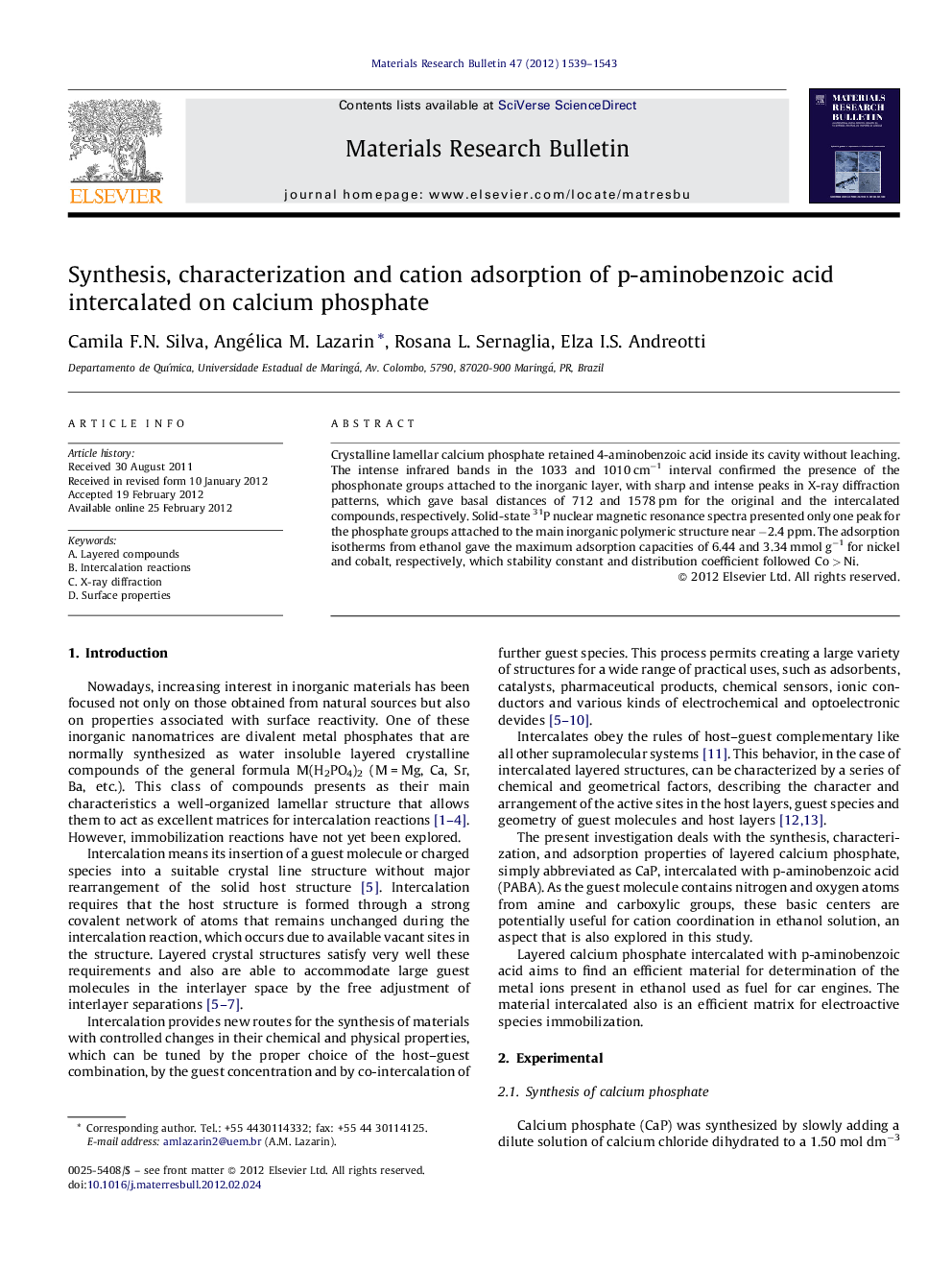| کد مقاله | کد نشریه | سال انتشار | مقاله انگلیسی | نسخه تمام متن |
|---|---|---|---|---|
| 1489791 | 992312 | 2012 | 5 صفحه PDF | دانلود رایگان |

Crystalline lamellar calcium phosphate retained 4-aminobenzoic acid inside its cavity without leaching. The intense infrared bands in the 1033 and 1010 cm−1 interval confirmed the presence of the phosphonate groups attached to the inorganic layer, with sharp and intense peaks in X-ray diffraction patterns, which gave basal distances of 712 and 1578 pm for the original and the intercalated compounds, respectively. Solid-state 31P nuclear magnetic resonance spectra presented only one peak for the phosphate groups attached to the main inorganic polymeric structure near −2.4 ppm. The adsorption isotherms from ethanol gave the maximum adsorption capacities of 6.44 and 3.34 mmol g−1 for nickel and cobalt, respectively, which stability constant and distribution coefficient followed Co > Ni.
Scanning electron microscopy photographs of calcium phosphate (a) and intercalated with p-aminobenzoic acid (b).Figure optionsDownload as PowerPoint slideHighlights
► Calcium phosphate was intercalated with p-aminobenzoic acid.
► Guest molecule contains nitrogen and oxygen atoms from amine and carboxylic groups.
► These basic centers are potentially useful for cation coordination in ethanol solution.
► Crystal morphology of compounds is lamellar, it agrees with expected structural characteristics.
Journal: Materials Research Bulletin - Volume 47, Issue 6, June 2012, Pages 1539–1543